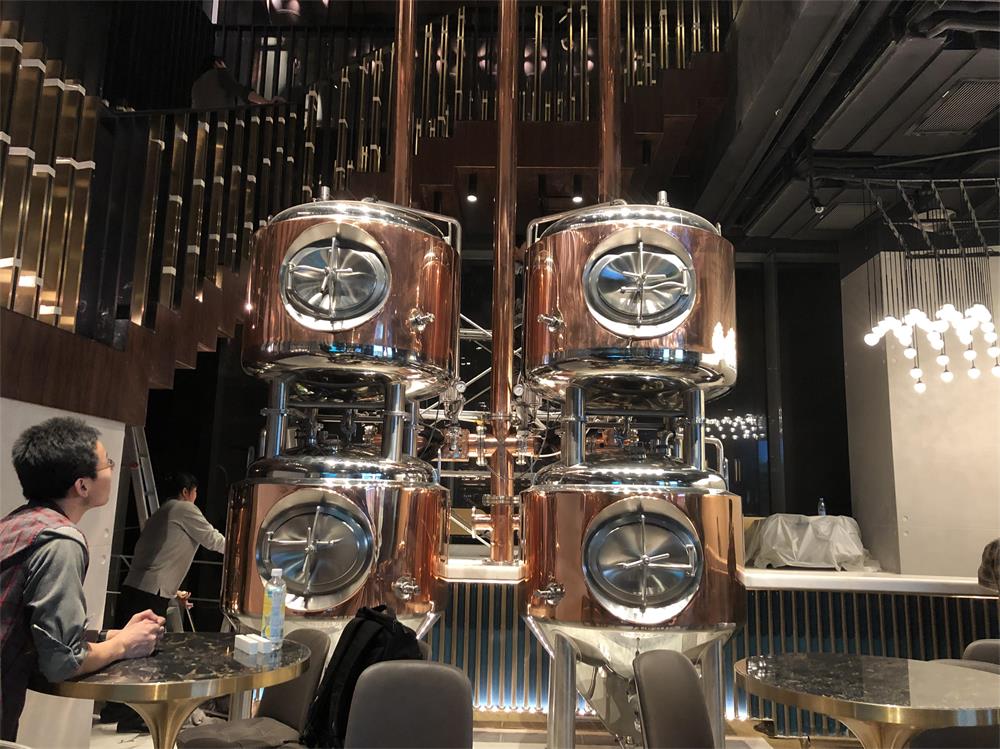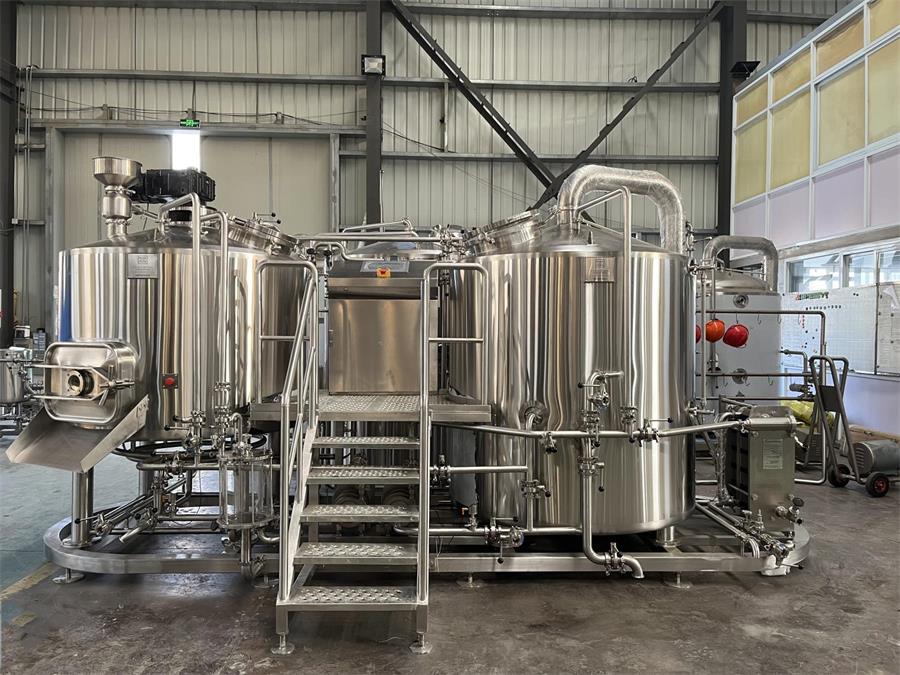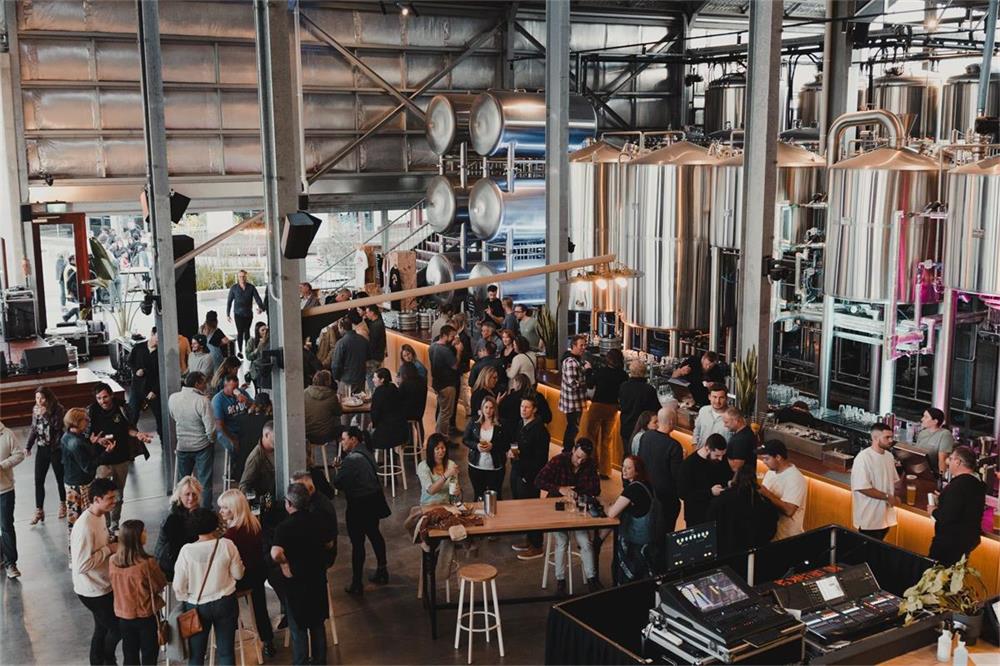Understanding Commercial Brewing Equipment
Commercial brewing is an intricate process that requires precision, expertise, and the right equipment. Whether you’re starting a new brewery or upgrading your current one, the equipment you choose plays a crucial role in the quality and efficiency of your brewing process. In this article, we’ll take a deep dive into the world of commercial brewing equipment, exploring everything from the types of equipment you’ll need, to the brewing process, and even how to choose the right supplier. We’ll also cover the costs associated with setting up and maintaining your brewing equipment. Let’s get started!
Overview of Commercial Brewing Equipment
Commercial brewing equipment is the backbone of any brewery, from small craft operations to large-scale beer production facilities. The equipment you choose will not only influence the quality of your beer but also impact your production capacity, energy efficiency, and overall operational costs.
At its core, commercial brewing equipment consists of several key components, including mash tuns, fermenters, brewing kettles, and filtration systems. Each piece of equipment serves a specific purpose in the brewing process, and understanding how they work together is crucial for producing high-quality beer. This guide will walk you through the various types of brewing equipment, helping you make informed decisions based on your brewery’s unique needs.

Guide to Commercial Brewing Equipment
Selecting the right equipment for your brewery involves understanding the specific functions of each piece of machinery. Here’s a detailed guide to the essential commercial brewing equipment:
Brewing Kettles and Mash Tuns
Brewing kettles and mash tuns are essential for the initial stages of the brewing process. The mash tun is where the malted grains are mixed with water and heated to extract fermentable sugars. This process, known as mashing, is critical for creating the wort, the liquid that eventually becomes beer.
The brewing kettle is where the wort is boiled, hops are added, and the beer’s flavor profile is developed. The material of the kettle, typically stainless steel, affects heat retention and distribution, which in turn influences the consistency of the brew.
Fermentation Tanks
After the wort is prepared, it’s transferred to fermentation tanks where yeast is added. The yeast consumes the sugars in the wort and produces alcohol and carbon dioxide, transforming the wort into beer. Fermentation tanks come in various shapes and sizes, often with temperature control systems to maintain optimal conditions for yeast activity.
Filtration Systems
Filtration systems are used to remove unwanted particles and clarify the beer. There are several types of filtration methods, including plate and frame filters, centrifuges, and membrane filters. The choice of filtration system can affect the clarity, stability, and shelf life of the beer.
Packaging Equipment
Once the beer has been brewed and filtered, it needs to be packaged. Packaging equipment includes bottling lines, canning lines, and kegging systems. The type of packaging equipment you choose will depend on your brewery’s production scale and target market.
Ancillary Equipment
In addition to the main brewing components, there are various pieces of ancillary equipment that are crucial to the brewing process. This includes pumps, heat exchangers, glycol systems for cooling, and CIP (Clean-In-Place) systems for maintaining hygiene.
Types of Commercial Brewing Equipment
| Equipment Type | Purpose | Key Features | Considerations |
|---|---|---|---|
| Mash Tuns | Mashing grains to extract fermentable sugars | Temperature control, insulated walls, false bottom | Material, capacity, ease of cleaning |
| Brewing Kettles | Boiling wort and adding hops | Even heat distribution, steam jackets | Heating method, size, material |
| Fermentation Tanks | Fermenting wort into beer | Temperature control, pressure ratings | Size, shape, material, cooling systems |
| Filtration Systems | Clarifying beer | Type of filtration (membrane, plate, centrifuge) | Filtration efficiency, maintenance, longevity |
| Packaging Equipment | Bottling, canning, or kegging beer | Speed, automation level, packaging type | Output capacity, space requirements, versatility |
| Glycol Systems | Cooling fermentation tanks and wort | Temperature consistency, energy efficiency | Size, efficiency, compatibility with existing equipment |
| CIP Systems | Cleaning equipment in place without disassembly | Automated, chemical usage, cleaning efficiency | Integration with existing systems, ease of use |
Understanding the Brewing Process
Brewing is both an art and a science. The process of transforming simple ingredients like water, malt, hops, and yeast into beer involves several critical steps. Each step requires precise control over temperature, timing, and ingredient quality to produce a consistent and flavorful product. Let’s break down the brewing process:
Step 1: Milling
The first step in brewing is milling, where the malted grains are crushed to expose their starches. The milling process is crucial as it influences the efficiency of the mashing process. A finer grind can lead to a higher yield of fermentable sugars, but it also increases the risk of creating a sticky mash that can be difficult to work with.
Step 2: Mashing
Mashing is the process of mixing the milled grains with hot water in the mash tun. The heat activates enzymes in the malt, which break down the starches into fermentable sugars. The temperature and duration of the mash will affect the beer’s body, sweetness, and alcohol content.
Step 3: Lautering
After mashing, the mixture is transferred to the lauter tun, where the solid grains are separated from the liquid wort. This step is critical for ensuring that only the liquid wort, which contains the sugars needed for fermentation, is collected.
Step 4: Boiling
The wort is then transferred to the brewing kettle where it is boiled. During the boil, hops are added to impart bitterness, flavor, and aroma to the beer. The boiling process also sterilizes the wort, eliminating any unwanted bacteria or wild yeast.
Step 5: Fermentation
After boiling, the wort is cooled and transferred to fermentation tanks, where yeast is added. The yeast ferments the sugars in the wort, producing alcohol and carbon dioxide. The length of fermentation, as well as the temperature at which it is conducted, will affect the beer’s flavor, alcohol content, and carbonation levels.
Step 6: Conditioning
Once fermentation is complete, the beer is conditioned. During conditioning, the beer matures and develops its final flavor profile. This can take place in the fermentation tank, in a separate conditioning tank, or in the packaging itself.
Step 7: Filtration and Packaging
The final steps involve filtering the beer to remove any remaining particles and packaging it for distribution. The choice of packaging—whether bottles, cans, or kegs—will depend on the brewery’s target market and distribution strategy.
Brewing Equipment Specifications and Design Considerations
When planning your brewery, it’s essential to consider the capacity, design, and layout of your brewing equipment. The right choices can optimize your production process, reduce costs, and improve the quality of your beer. Below is a detailed comparison of different brewing equipment specifications:
| Specification | Capacity | Space Requirements | Design & Layout | Customization Options |
|---|---|---|---|---|
| Mash Tuns | 500 – 5000 liters | Requires significant floor space, needs proximity to brewing kettle | Multi-vessel designs, variable rake systems | Custom false bottoms, varying insulation thickness |
| Brewing Kettles | 1000 – 10000 liters | Central placement for easy access, steam and drain considerations | Double-walled, steam jacketed | Custom agitators, vent systems |
| Fermentation Tanks | 1000 – 20000 liters | Vertical height considerations, needs cooling access | Conical or cylindrical designs, variable wall thickness | Custom jackets, cooling coils |
| Filtration Systems | 500 – 2000 liters per hour | Compact, near fermentation tanks | Modular systems, stackable filters | Custom filter media, automated backwashing |
| Packaging Equipment | 1000 – 5000 bottles/cans per hour | Line configuration, space for packaging materials storage | Inline or rotary systems, automation levels | Custom labeling, different packaging types |
Suppliers and Price Ranges for Commercial Brewing Equipment
Choosing the right supplier is critical to the success of your brewery. The quality, cost, and service provided by your supplier will directly impact your operations. Below is a comparison of leading suppliers and the price ranges you can expect for different types of commercial brewing equipment:
| Supplier | Equipment Provided | Price Range | Notable Features | Geographic Availability |
|---|---|---|---|---|
| ABC Brewing Solutions | Complete brewing systems, fermentation tanks | $50,000 – $500,000 | Custom design, high durability, integrated automation | North America, Europe |
| BrewTech Co. | Kettles, mash tuns, CIP systems | $30,000 – $400,000 | Energy-efficient designs, modular systems | Asia, Australia |
| ProBrew Equipment | Filtration systems, packaging lines | $40,000 – $300,000 | Advanced filtration technology, high throughput | North America, Europe |
| Global Brewing Solutions | Glycol systems, fermentation tanks | $25,000 – $350,000 | Custom cooling solutions, compact designs | Global |
| Craft Equipment Inc. | Turnkey brewing systems, ancillary equipment | $60,000 – $600,000 | High-quality materials, complete installation services | North America, Europe, Asia |
Installation, Operation, and Maintenance of Commercial Brewing Equipment
Operating a brewery requires not just purchasing the right equipment but also installing, operating, and maintaining it correctly. Here’s a breakdown of the key considerations:
| Aspect | Installation | Operation | Maintenance |
|---|---|---|---|
| Mash Tuns | Requires professional installation to ensure proper alignment and seal | Operated via temperature-controlled systems, requires careful monitoring | Regular cleaning, inspection of seals and heating elements |
| Brewing Kettles | Must be installed with proper steam and drainage systems | Requires precise control over boiling times and temperatures | Routine descaling, inspection of steam jackets |
| Fermentation Tanks | Needs cooling systems integrated during installation | Monitored for temperature, pressure, and yeast activity | Regular cleaning, inspection for leaks and pressure maintenance |
| Filtration Systems | Installed with proximity to fermentation tanks | Operation depends on type of filtration, automated options available | Filter media replacement, system backwashing |
| Packaging Equipment | Requires precise alignment of filling and sealing systems | Operated via automated systems, requires periodic calibration | Regular cleaning, lubrication of moving parts |
Choosing the Right Supplier for Your Brewing Equipment
Selecting the right supplier involves more than just finding the best price. Here’s a guide to what you should consider:
| Consideration | Why It Matters | What to Look For |
|---|---|---|
| Experience | Suppliers with experience understand the unique challenges of brewing | Look for suppliers with a proven track record in the industry |
| Quality | High-quality equipment is crucial for consistent beer production | Check for certifications, reviews, and material specifications |
| Support | Ongoing support ensures that your equipment continues to operate efficiently | Look for suppliers that offer installation, training, and maintenance services |
| Customization | Customizable equipment can better meet your specific brewing needs | Ask about the ability to customize size, design, and features |
| Price | While price is important, it shouldn’t be the only consideration | Compare prices but also consider the long-term value and cost of ownership |
| Location | Proximity can affect shipping costs and support availability | Consider suppliers located near your brewery or with local representatives |
Advantages and Limitations of Commercial Brewing Equipment
Understanding the advantages and limitations of commercial brewing equipment is essential for making informed decisions. Here’s a comparison:
| Equipment | Advantages | Limitations |
|---|---|---|
| Mash Tuns | Efficient extraction of sugars, customizable designs | Can be expensive, requires significant space |
| Brewing Kettles | Provides precise control over boiling process | High energy consumption, requires careful installation |
| Fermentation Tanks | Allows for precise control over fermentation conditions | Requires significant space, cooling systems can be costly |
| Filtration Systems | Improves beer clarity and stability | Regular maintenance required, can be complex to operate |
| Packaging Equipment | Allows for high-volume production | Expensive, requires significant space and regular maintenance |

FAQs
| Question | Answer |
|---|---|
| What is the most critical piece of brewing equipment? | The brewing kettle is often considered the most critical because it’s where the wort is boiled, and hops are added. |
| How much does it cost to set up a commercial brewery? | Costs can range from $100,000 to over $1 million, depending on the size, scale, and customization of the equipment. |
| Can I start with a smaller setup and scale up later? | Yes, many breweries start small and upgrade their equipment as they grow. Ensure your initial equipment is scalable. |
| What is the best material for brewing equipment? | Stainless steel is preferred for its durability, ease of cleaning, and resistance to corrosion. |
| How often should brewing equipment be maintained? | Regular maintenance should be conducted after each brewing cycle, with more thorough inspections done quarterly. |
| What factors should I consider when choosing a supplier? | Consider experience, quality, support, customization options, price, and location when choosing a supplier. |
Conclusion
Choosing the right commercial brewing equipment is a critical step in setting up a successful brewery. From understanding the types of equipment and their roles in the brewing process to selecting the right supplier and ensuring proper installation and maintenance, every decision you make will impact the quality and efficiency of your beer production. By following the guidelines outlined in this article, you’ll be well-equipped to make informed choices that will help your brewery thrive.
Share this entry
Interested in learning more about Brewing Systems including additional details and pricing information? Please use the form below to contact us!
YOLONG BREWERY EQUIPMENT FAQS
- Commercial Brewery / Craft Brewery / Microbrewery / Nanobrewery
- What is The Difference Between Craft Beer and Industrial Beer?
- The Bespoke Differences In Custom Brewing Systems
- Everything You Need to Know About Kettle Souring
- How to Choose Brewing Equipment for Your business?
- How To Choose The-Best Partner To Build Your Commercial Microbrewing System?
- Two Detection Sensors That You Need To Use In Your Brewhouse System
- Remote Control Applications in Brewing Equipment/How does it work?
- How To Clean Your Brand New Brewery Tanks?

